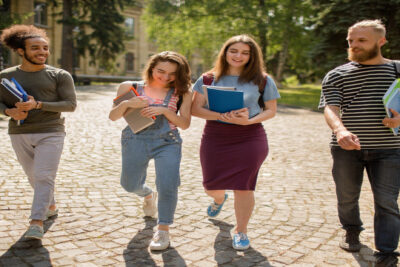How to design a virtual tour that addresses Gen P’s biggest concerns
At EAB, we survey tens of thousands of high school students every year to understand their college search experiences and their attitudes toward higher education. In our most recent survey, ‘Gen P’ students (those whose high school experience was most impacted by the pandemic) told us that they were especially concerned about three things when considering their potential college future: the value of a college education, mental health readiness and support, and their own academic preparedness
These concerns aren’t marketing problems per se, but marketing can play an important role in helping prospective students understand the full scope of opportunities and resources available to them in college. Accordingly, working on behalf of our college and university partners, my team of marketers at EAB have been amplifying messaging and resources on these topics within enrollment communications—in every channel from emails to print pieces to virtual tours.
Because virtual tours are highly trafficked and have the potential to speak directly to students’ concerns, I thought it would be useful to share how virtual tours can address Gen P’s top concerns, in a way that could be more compelling and immersive than other channels.
Concern 1: The value of a college education
Since 2019, EAB has seen a 12% increase in students reporting that college “isn’t worth the cost.” This is an alarming trend that warrants additional attention in your recruitment marketing. But what is the best way to demonstrate value to prospective students?
As you can see in the graph below, students cited aspects of affordability and career preparation when asked about the value of a college degree—and these are excellent focus areas for a virtual tour.

How to address value concerns using a virtual tour
Provide a clear topic picklist
Dedicate a subset of virtual tour destinations to topics that students say make college worth the cost, such as job outcomes, career services, and active learning experiences. Be pointed and specific when highlighting your offerings, such as the average starting salary of graduates.
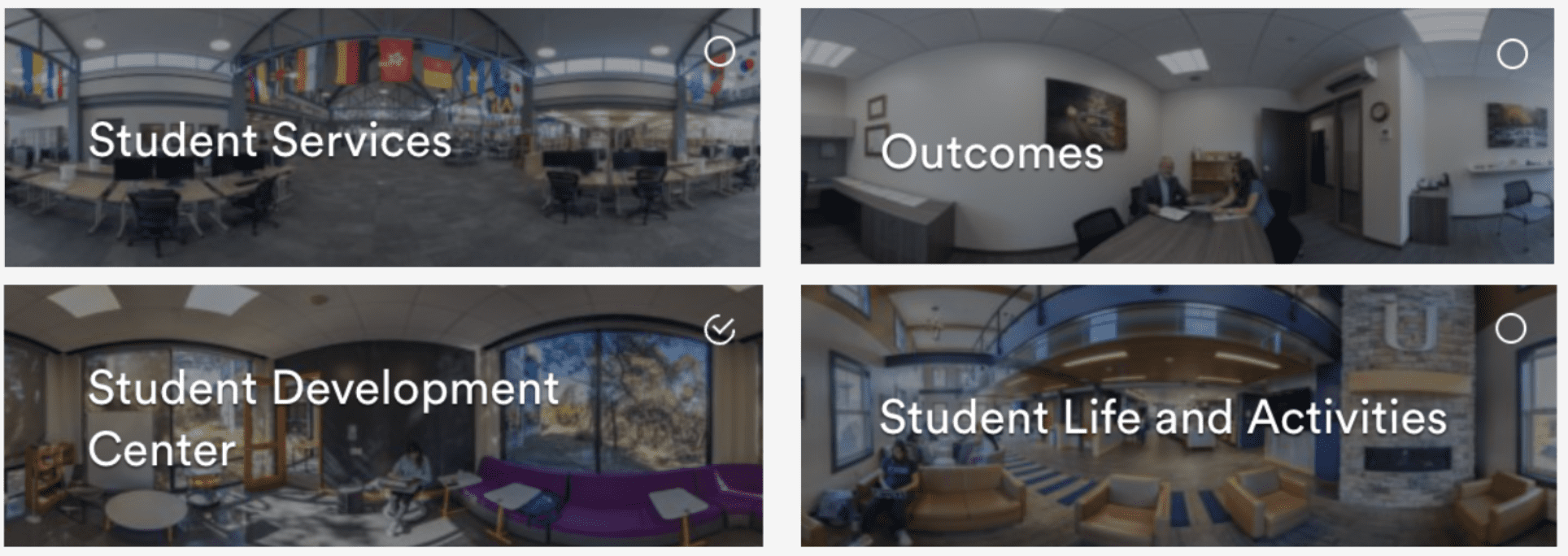
Use concrete examples
Use current student and alumni voices to share real stories and lived experiences. Concrete examples of how a student maximized financial aid options or how a recent graduate took advantage of community partnerships to propel their post- graduate career will help prospective students imagine tangible possibilities.

Share opportunities
Showcase opportunities for students to “try before they buy”, such as a summer program or dual enrollment offerings.
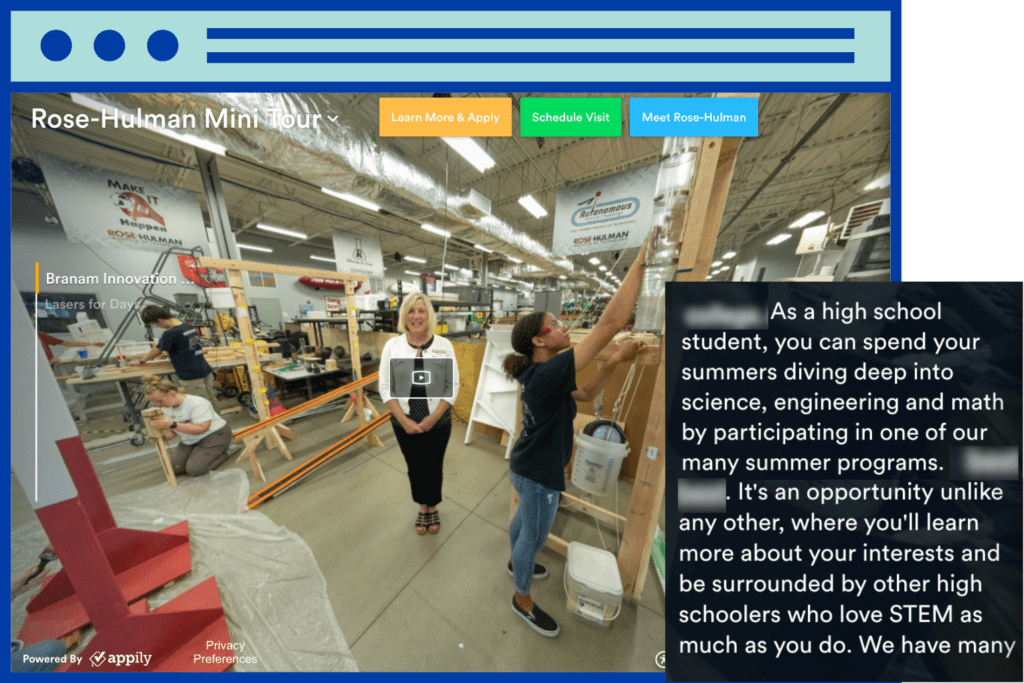
Concern 2: Mental health readiness
The rise in anxiety and depression among high school students has led to a notable increase in students reporting that they are not mentally ready to attend college directly after high school. First-generation and low-income students are even more likely to cite this as a reason for not attending college.
And once on campus, just two-thirds of students say that they know where to turn if they (or a friend) were experiencing a mental health crisis. You can use your virtual tour to showcase your school’s mental health resources early in the college-search journey.

-
8%
Increase in students feeling “not mentally ready” as their reason for opting out of college since 2019.
How to address mental health concerns using a virtual tour:
Link to critical information
Open more ways for students to access critical information by linking directly to counseling service resources from relevant scenes. Be sure to provide all the necessary information, including contact numbers and where to physically access on campus.

Normalize help-seeking behavior
Showcase students speaking about their lived experiences with mental health support on campus. Personal stories will add a level of authenticity to your virtual tour and normalize help-seeking behavior.

Involve your mental health professionals
Enlist the voices of your mental health professionals to build trust and familiarity early on.
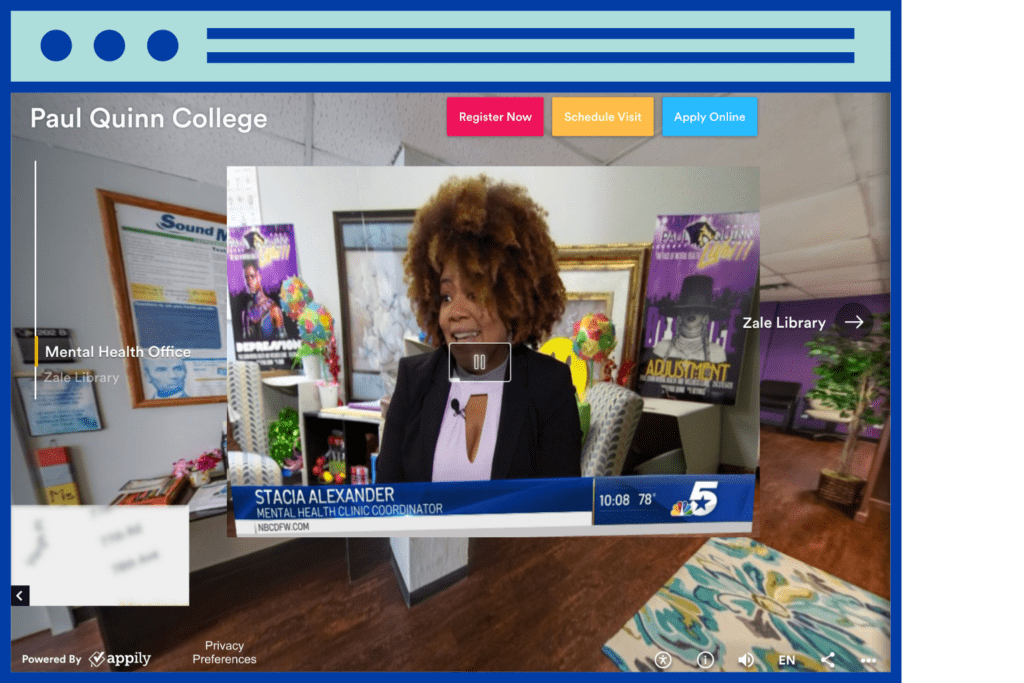
Concern 3: Academic preparedness
Disruptions from the pandemic have exacerbated declines in academic achievement, leaving ‘Gen P’ to question their readiness for college-level work. The National Assessment of Educational Progress (NAEP), a large-scale assessment of K-12 student progress, found a five point drop in average scores during the pandemic-the largest ever recorded.
With 26% of students citing concerns about their ability to succeed in college, it is more important than ever to ensure students know how and where to find academic help when they need it. Your virtual tour can do just that.
How to address concerns about academic preparedness using a virtual tour
Draw attention to your support services
Highlight academic support services that are campus-wide and/or program-specific.

Share real student experiences
Have current students talk about their first-year experience, including any skills-based classes that helped them become more equipped to meet the demands of college.

Let students step inside learning environments
Prepare students for what it’s like to earn a degree from your institution by taking them inside the places and spaces where they will learn. Share how those learning environments will support them.
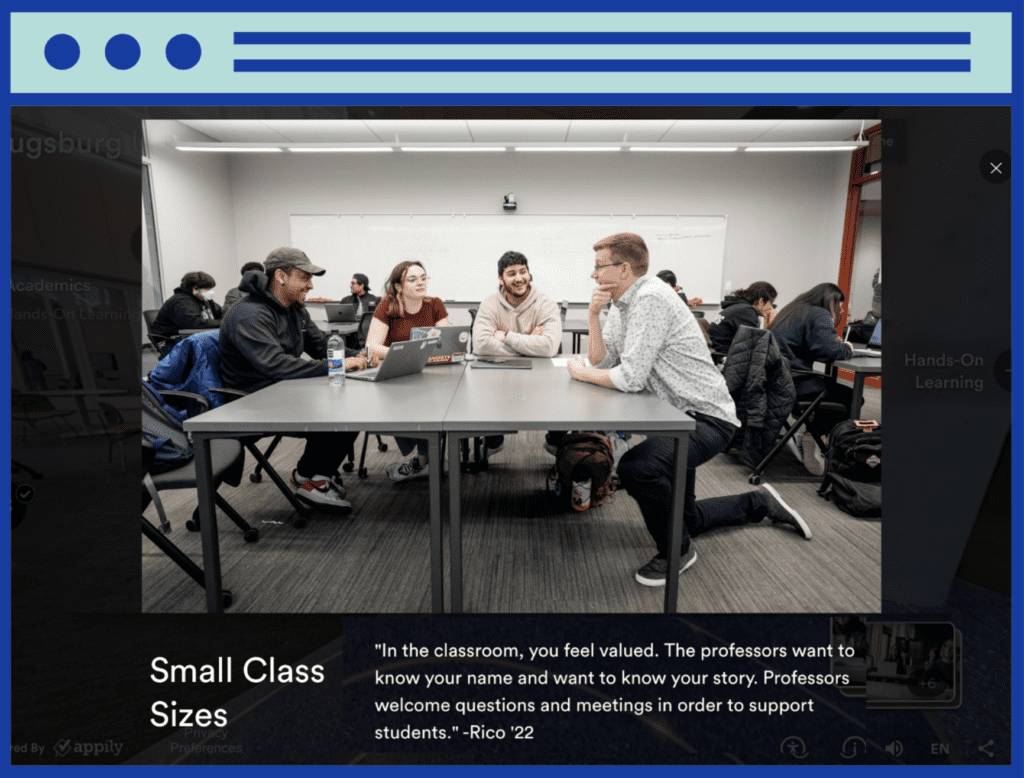
These are just a few examples of how the immersive storytelling format of virtual tours can be used to address students’ common concerns. The reality is that colleges have compelling messages about value, mental health support, and academic preparedness that prospective students need to hear—but that requires colleges to communicate consistently, frequently, and in as many channels and formats as possible.

More Blogs

The opportunity gap undermining your enrollment strategy

What enrollment leaders can learn from Alabama’s statewide direct admissions program
